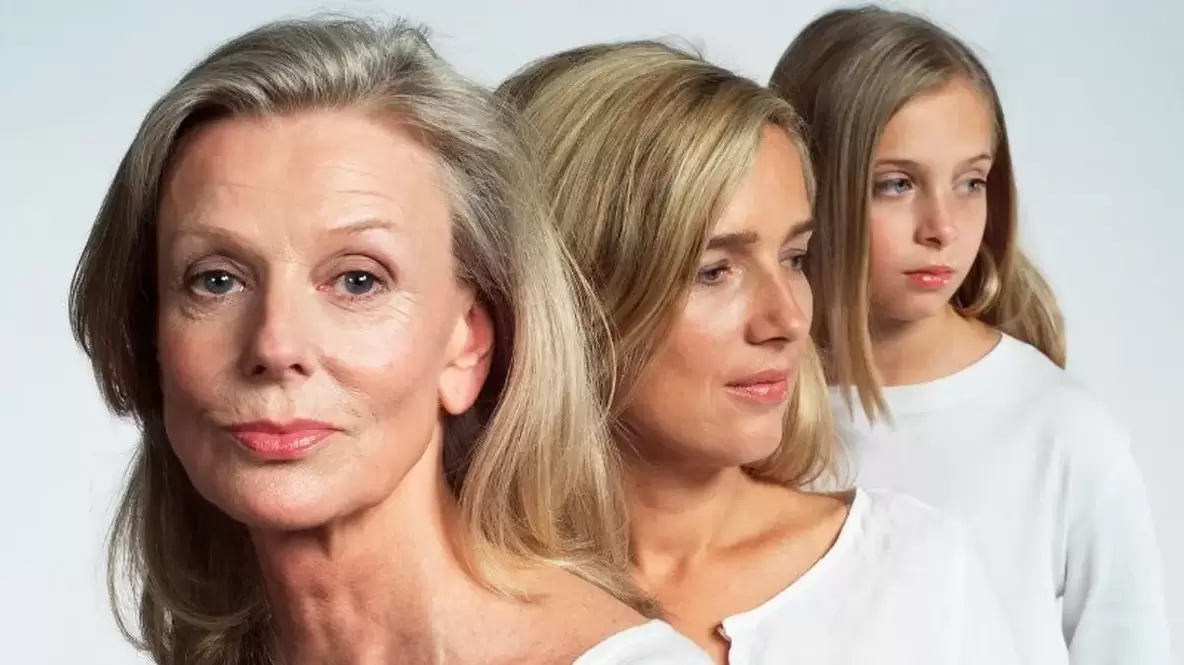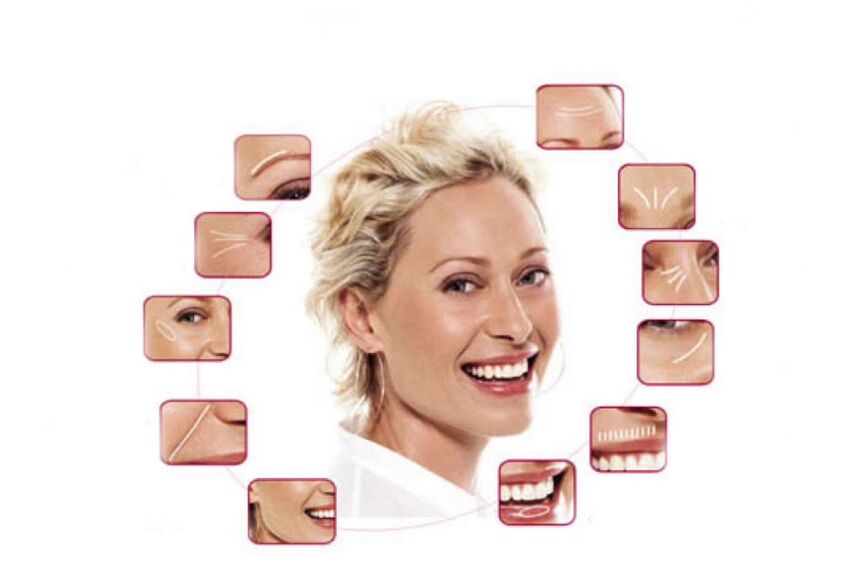
Slowing down the aging process of the skin is the basis of cosmetology. Until recently, it was believed that the skin began to age at the age of 40, when the first wrinkles appeared. And cosmetics especially fight wrinkles. It is now quite clear that the aging process of the skin begins long before the appearance of visible signs and it begins at the cellular level for about thirty years. Currently, researchers have a large amount of biomedical scientific knowledge about the structure and function of the skin, oxidative stress and its causes, the mechanisms of intracellular adaptation and repair, the quality and intensity of intercellular interactions.
It is accepted for today,that skin aging is not just about visible signs: wrinkles, uneven pigmentation, sagging skin gravity, dryness, etc. First of all, this is a sign of aging skin cells and tissues, changes in subtle processes that take place in the epidermis and dermis.
The mechanism of aging affects the most important cell organelles:
- DNA- the most important elements of storage and execution of hereditary information;
- mitochondrial- unique organelles to energize the cell and ensure its survival in difficult conditions;
- Cell membrane- external signal transmission regulator and selective permeability of the material.
With external influences on the skin, complex processes are launched in the skin cells - they exchange information and coordinate a joint response to external challenges. These processes are very active at a young age. But as we age, it disappears, an imbalance of internal processes occurs and the skin begins to age. This raises the question of how to help the skin effectively fight aging at a young, mature and old age.
All the theories that explain the mechanism of skin aging, and there are more than 300 of them, can be divided into two large groups - aging based on internal (endogenous) and external (exogenous) factors. Endogenous aging is caused by information encoded in our DNA and there has been no way to influence this aspect. Exogenous aging is the overall result of the influence of aggressive environmental factors, including ultraviolet and infrared radiation, urban smoke ozone, cigarette smoke, etc. A significant shift in the study of the aging process from external factors occurred at the turn of the 20th and 21st centuries. Now, no one doubts the fact that external factors determine 60-80% of total aging (data for facial skin). Ultraviolet is recognized as the most dangerous.
Signs of skin aging in volume
Age-related changes usually appear externally, and signs of skin aging can be observed. Here is a list of the most common skin changes and their appearance. Research in recent years has made it possible to quantify many aging processes.
- The content of collagen in the dermis, which is needed to ensure the strength of the skin, drops by 1% each year after the age of 30 years.
- After 40 years, the skin becomes thinner by 1% every year.
- Skin cells recover 10-100 thousand mutations in DNA in a day, and 2 hours of exposure to the sun gives up to 1 million mutations.
- 15-minute exposure to the sun will reduce the skin’s antioxidant stores (especially vitamins C and E) by 70-90%, which requires at least 2 hours to recover.
- Of all the proteins synthesized in the cell, 40% are produced by mistake - uninterrupted operation of cellular mechanisms is required for their use and processing.
- In total, the body contains about 15 g of hyaluronic acid, and 10 g of it falls on the skin. Complete renewal of all hyaluronic acid occurs in the body in three (! ) Days - any failure in the work of skin cells for the synthesis of hyaluronic acid turns into a micro catastrophe for the skin.
- Decreased elasticity of the stratum corneum and epidermis. With age, the stratum corneum becomes thicker, and the upper layer, by contrast, becomes thinner (from 30 to 70 years - twice). Skin tightness decreases and the skin becomes dull.
- Reduces the amount of water in the stratum corneum. With age, the amount of water in the skin changes: 75-70% in 25 years to 63-65% in the elderly. The skin becomes dry, less dense, and skin sensitivity increases.
- Increased skin pigmentation. Over time, due to the negative effects of sunlight, age spots appear on the skin.
- With age, the activity of the sebaceous glands decreases. As a result, the skin becomes drier and more susceptible to free radicals.

The main reason for skin aging is a decrease in the rate of repair
All skin functions and regeneration processes are preserved in humans even in extreme old age. The problem is that their speed is getting slower. If young skin is able to respond to negative impulses and stop its ill effects within 12 hours, then older skin already needs 30 hours. Thus, it is clear that in the elderly, the recovery process is very slow. That is, intact young and old skin are equally effective as a barrier and protection. The difference becomes apparent when the skin is damaged and the need to restore the destroyed structures and mechanisms. Taking into account that our skin is in a state of constant invasion of external factors, then the older we age, the greater the increasing incidence of untreated "damage" and damage. That is, mature skin does not have time to overcome the damage, and the skin accumulates and appears as a sign of external aging. That is, all signs of aging are "untreated" skin lesions.
The degree of age -related changes in skin and care features
Young skin is differenthigh youth molecular content, high intensity of recovery process. Young skin is much denser than mature skin, more elastic, structural fibers, collagen and elastin, arranged. The rate of cell renewal is approximately 28 days. Skin changes associated with the first age begin to occur from the age of 25 years. Therefore, the main focus in cosmetics of this age group is protection and prevention. These include protection from ultraviolet radiation, support of water and lipid balance in the skin, mandatory use of various antioxidants.
Mature skin is differenta decrease in the content of "youth molecules" and a slowing of the recovery process. Daily stress becomes more traumatic and damages the skin. Signs of skin aging begin to appear externally in the form of wrinkles, crow’s feet around the eyes, sagging skin on the cheekbones and chin. Here anti-aging cosmetics not only provide protection, but also support for their own processes (protective and maintenance cosmetics). The use of substances to maintain cell life (protection of cell membranes, DNA and mitochondria), increase the synthesis of collagen, elastin and hyaluronic acid is topical. It is needed to strengthen and maintain high intensity of communication between cells with the help of regulatory peptides and growth factors.
In old age,large deficits of recovery mechanisms. The rate of renewal of skin cells after 55 years is reduced and is already 3-4 months (28 days before the age of 25 years). This occurs against a background of uncontrolled injuries that have not yet accumulated. The signs of skin aging become more pronounced - the number and depth of wrinkles increase, the skin becomes drier and duller. Anti-aging cosmetics in this day and age are lost protection, support and replacement. Active ingredients from both previous age groups and their own can be used- bioflavonoids with phytoestrogenic activity (to replace their own estrogen levels), cholesterol in special ratios with ceramides and fatty acids to replenish lipid barriers, intradermal moisturizers, anti-inflammatory stabilizer componentsand vascular.
Each of us is different. However, the processes that take place in our skin are determined by nature in the same way for everyone. Including the aging process of the skin. At each age, the degree of manifestation of certain changes differs. Take a closer look at yourself. Maybe you will see some changes today. So, it’s time to act! It is important to choose beauty care products according to the age and needs of the skin at every stage of life.
Skincare products and expert treatments will help you slow down your skin’s aging process and make your skin look youthful for years to come. In the many types of cosmetics and procedures today, women of any age group can choose the right anti-aging product for themselves.














